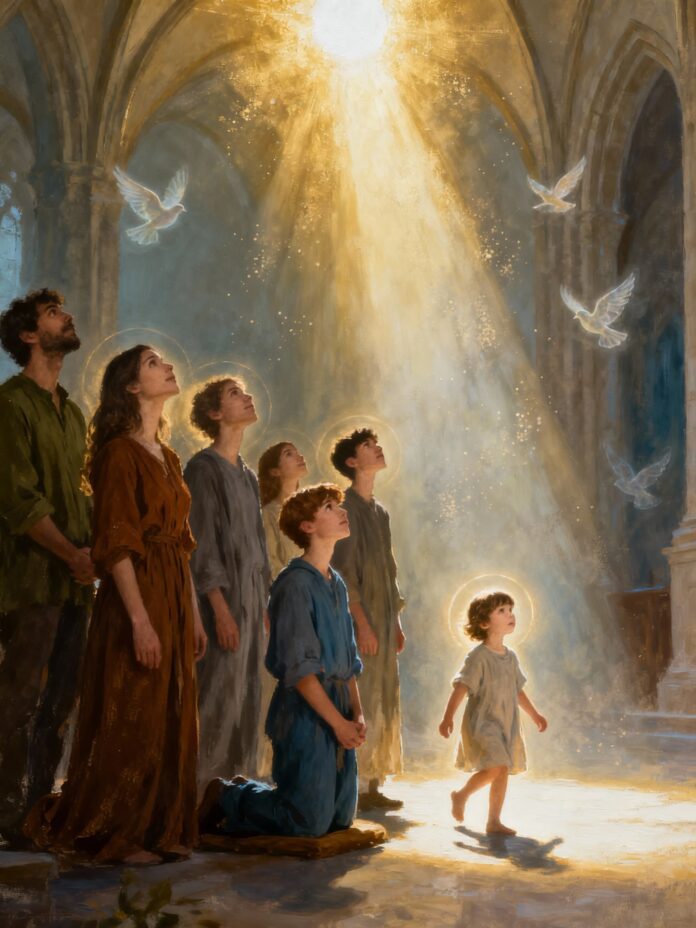Reading from the first letter of Saint John
Beloved,
See what great love the Father has given us!
so that we may be called children of God
– and we are.
This is why the world doesn't know us:
It's because he didn't know God.
Beloved,
From now on, we are children of God.,
But what we will be has not yet been revealed.
We know that when this manifests,
we will be like him
because we will see it as it is.
And whoever places such hope in him
makes himself pure as he himself is pure.
– Word of the Lord.
We will see God as he is
Entering into the light of filiation: understanding, hoping, and living today the promise of Saint John.
The human heart yearns to see God, to discover the ultimate mystery of the One who created it. The First Letter of Saint John opens this door, simple yet breathtaking: «We shall see God as he is.» Everything is contained within it—the Father’s love, the dignity of children, the expectation of glory, the purification along the way. This article offers a complete exploration of this passage, so short yet so infinite, addressed as much to the intellect as to the inner life, to help us learn to recognize even now the light that will dawn in its fullness.
- Context and source text: where does Saint John speak from and to whom is he addressing himself?
- Central analysis: the triple logic of love, filiation, and vision.
- Thematic deployment: love received, active hope, purification experienced.
- Practical applications: to live like a child, to love truthfully, to hope clearly.
- Echoes and traditions: voices of the Fathers and mystics on the vision of God.
- Practice track and daily meditation.
- Current questions and modern spiritual challenges.
- Final prayer and handy handout to take away.
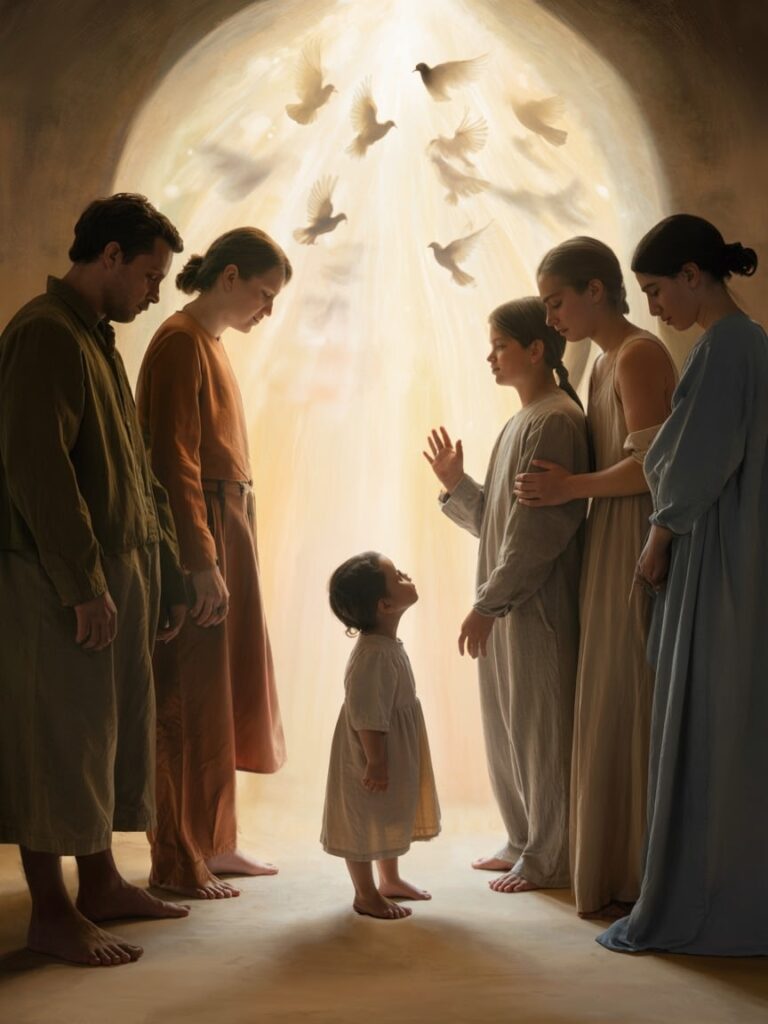
Context
In his first letter, Saint John addresses a Christian community already suffering from internal divisions and Gnostic rhetoric that threatened to obscure the meaning of the Incarnation and of sonship. We are at the end of the first century, in the area around Ephesus. The elderly evangelist, a direct witness to Christ, presents himself not as an academic theologian but as a spiritual father. He employs simple, circular, and repetitive language, rich in symmetries and images of light, to reveal the depth of God's love.
The passage in 1 John 3:1-3 lies at the heart of a larger text where John radically distinguishes between two forms of belonging: belonging to the world (the rejection of God, ignorance of the light) and belonging to God (the children begotten by Him). The expression "see what great love" introduces a moment of contemplation: it is not a reasoning but an invitation to be captivated. The author contemplates and invites others to contemplate: Christian identity stems from a gift, not from merit.
John does not reason according to logical time but theological time: he juxtaposes the present—"we are children of God"—and the future—"we shall be like him"—in a single dynamic. The time of faith is both already here and not yet here. Hope then becomes an openness to what God will fully reveal, a striving toward the direct vision of the mystery: "We shall see him as he is."«
This promise, central to all Christian theology, refers to the supreme beatitude spoken of by Christ: «Blessed are the pure in heart, for they shall see God.» John thus intimately links vision and purity of heart. Seeing God is not a privilege reserved for a select few, but the fulfillment of every loving life. The verb “to see” here expresses participation in the truth and the very life of God. The Christian does not become God by nature, but through communion.
The stakes of this text are immense: to affirm that the ultimate goal of faith is not an abstraction (salvation, glory, survival) but a person-to-person encounter, a face-to-face meeting unveiled. The world may ignore this reality because it ignores the source of this love. Yet, those who receive this gift already bear the mark of what they will fully become.
Analysis
The central idea of the passage is that of a growing identity We are already children of God, but not yet manifested as such. Three verbs articulate this revelation: to give, to see, to purify. Each one opens up a path of inner transformation.
- Giving: it all begins with the Father's initiative. Love is given, not earned. John draws attention to the disproportion: the Creator gives us the gift of being his children. This filiation is not metaphorical; it is real: it transforms the human being from within. We participate in the divine nature, according to Peter's words: "you become partakers of the divine nature.".
- To see: faith is not yet vision, but it prepares the way for it. Hope tends toward a face-to-face encounter, not to satisfy curiosity, but to fulfill love. To see God as he is is to contemplate truth without falsehood, light without shadow, to be illuminated without being destroyed.
- Purification: this hope has a present consequence. He who hopes in this way purifies himself. Eschatological expectation here becomes a moral imperative: faith that awaits the light cannot revel in darkness. The promised vision shapes present behavior.
The beauty of the text lies in its balance: it never separates mysticism and ethics, contemplation and transformation. Hope is not an escape from the world; it transfigures life within the world. The Christian does not withdraw into a dream; he walks, allowing himself to be shaped by the promise of what he will become.
This progression is structured by the logic of sight: God looks at humanity, humanity looks at God, the world sees neither. Sight becomes the measure of spiritual closeness. To be a child is to be recognized and to recognize. In this way, John describes the Christian faith as a reciprocal relationship of seeing and knowing. The final promise, "We shall see God as he is," is the culmination of this dialogue, begun now in faith.
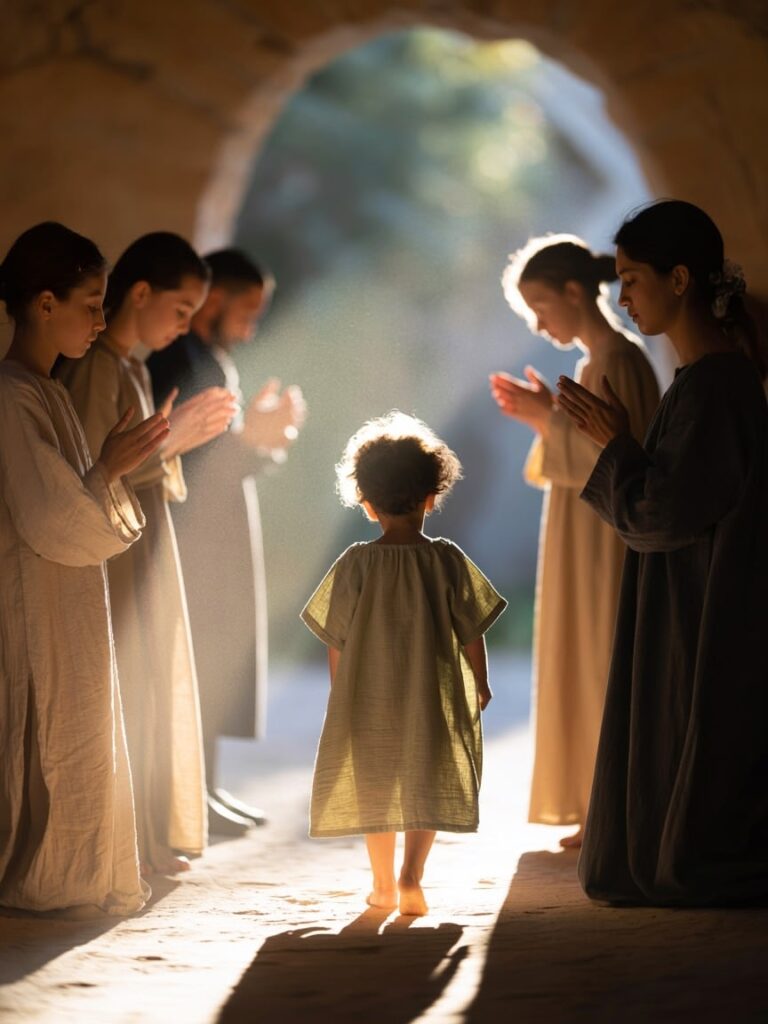
The love received and the dignity of children
John does not begin with a command, but with an exclamation of wonder: «See what great love!» Christianity is not primarily a system of values; it is first and foremost an event of love. The reader is invited to contemplate, not to demonstrate. This love has a direct consequence: divine adoption. Being a child of God is not merely a beautiful image. It is a new birth, a different way of being. It engages the whole person—intellect, will, and emotions.
The dignity of childhood overturns the categories of merit and power. It puts an end to the logic of calculation: the son does not need to prove his worth, for he is loved even before he acts. In a society founded on performance, rediscovering this lineage breathes life into spiritual freedom. Man is no longer a metaphysical orphan, but a beloved heir.
This new identity also explains the distance from the world: «The world does not know us.» The disciple should not expect to be fully understood, for his center is not visible. Just as Christ was misunderstood, the Church often remains misunderstood. But this outward obscurity conceals a secret of light.
Active hope and the promise of resemblance
The future unfolds: «What we will be has not yet been revealed.» This verb indicates a revelation awaiting us. It is not simply a moral becoming, but an ontological transformation: we will be like Him. The likeness evoked is not a merging of natures but a communion of glory. The promise will not be a static state but an infinite relationship, an endless deepening of the encounter.
This hope is not passivity. It acts, it purifies, it energizes present charity. Christian hope is performative: it shapes what it awaits. Just as the morning light announces the day, so hope prepares the vision. It is not reduced to vague optimism: it rests on the faithfulness of a Love already at work. The person who hopes already becomes like that which they await.
The purification and clarity of vision
John concludes: «Everyone who has this hope in him purifies himself, just as he is pure.» This statement effects an ethical transition: fixing one's gaze on God purifies the heart. Christian morality is neither constraint nor perfectionism, but the consequence of a gaze. It is not because I must be pure that I purify myself, but because the One I love is pure and I want to be like Him. Purity becomes love.
Purification manifests as a detachment from illusions, hasty judgments, and duplicity. It permeates sensory and relational life. It is not limited to abstinence, but arises from an inner light. The truth of one's gaze transforms desires: to see God is to learn to see everything else differently.
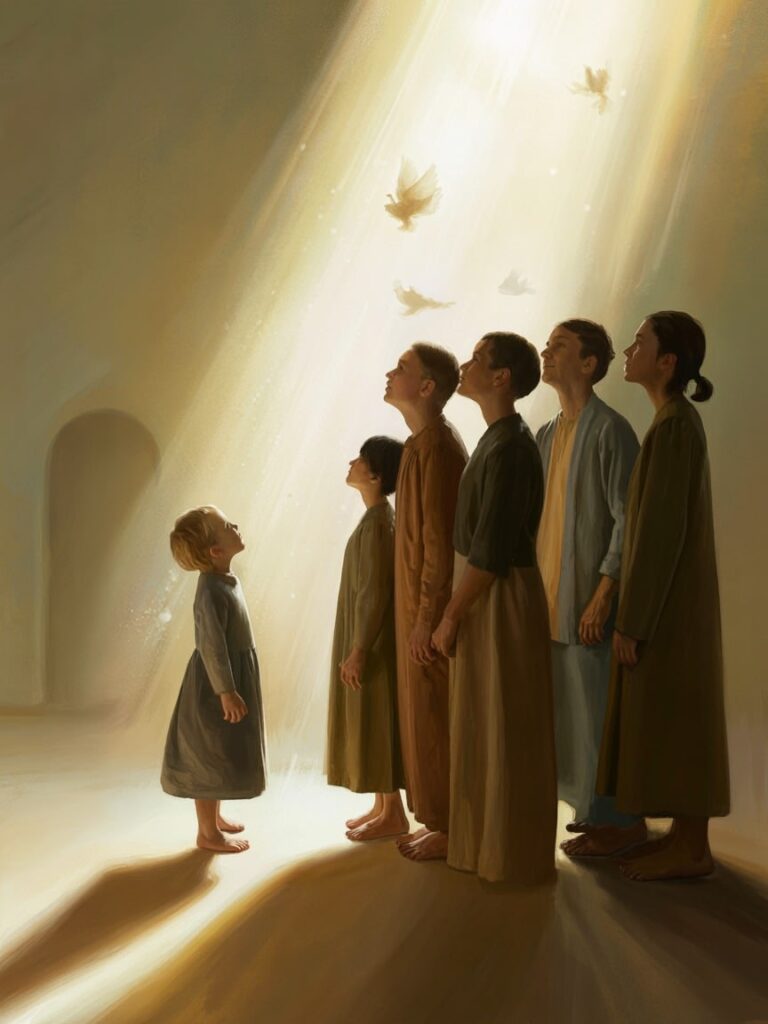
Applications
In everyday life, this text translates into three spheres: the relationship with oneself, with others, and with God.
- Personal life: Remembering each morning that you are a child of God reorients the day. It establishes a stable identity, independent of success or public opinion. Cultivating gratitude makes life light and consistent with who you truly are.
- Fraternal life: the shared dignity of sons and daughters of the same Father changes how we see others. It is impossible to despise someone whom God loves. In the family, at work, at school, this awareness can defuse everyday violence.
- Spiritual life: prayer becomes a space of recognition rather than of request. To see God here below, in faith, is already to welcome a ray of his presence in the face of Christ, in the Gospel, in the sacraments.
These concrete applications show that contemplating the future is far from being an escapism. It motivates a more genuine engagement in everyday life. To hope is to live upright, like a confident child.
Tradition
From the earliest centuries, the Church Fathers meditated on this verse. Irenaeus saw in it confirmation that "the glory of God is man fully alive, and man's life is the vision of God." Augustine reminded us that the vision of God is fulfilled in charity: to love is already to see in part. Gregory of Nyssa showed that the divine likeness has no end: the closer one draws, the greater the discovery becomes.
In the mystical tradition, this promise of vision was a fire. Catherine of Siena wrote that beatitude consists in the perfect knowledge of divine goodness. John of the Cross described the purification of the soul as a slow preparation for this encounter, where faith will become clear light. Teresa of Avila evoked the gaze of Christ in her "Interior Mansions": even here below, it is possible to be looked upon by God in a way that expands the heart.
The liturgy of All Saints, where this text is often read, places the Johannine promise at the heart of the universal vocation to holiness. Seeing God as he is is the horizon of every disciple. The Catechism of the Catholic Church (no. 1023) speaks of the "beatific vision": those who die in grace see God face to face and live in the exchange of life with the Trinity.
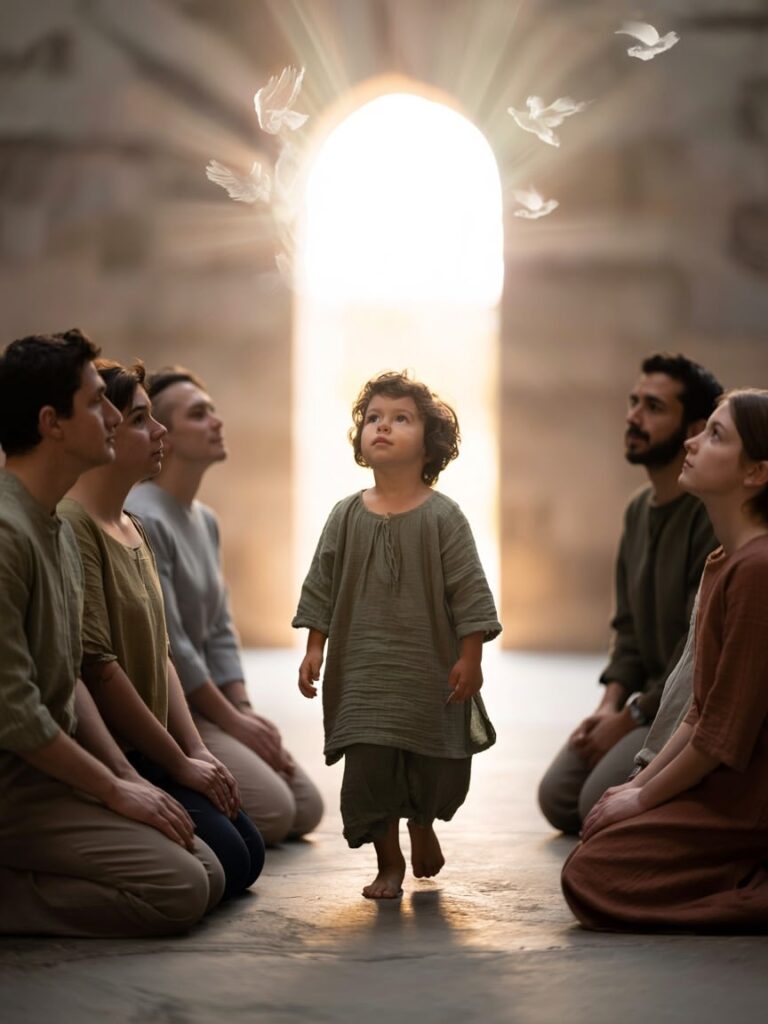
Meditation
- To become silent and reread slowly: "See what great love".
- To bring back a memory of feeling fully loved, unconditionally.
- To recognize that this love is a sign, a reflection, a first fruit of the Father's love.
- Say inwardly: "I am a child of God, even if I do not yet fully see Him."«
- Imagine the moment when the veil will fall: not as curiosity, but as welcome.
- Conclude with a simple act of faith: "Lord, purify my vision so that I may already see you in my brothers."«
This meditation, repeated daily, accustoms the heart to the light it awaits. It makes hope concrete, tangible, and breathable.
Current issues
In the contemporary context, several challenges arise.
First, the crisis of filiation: many struggle to believe they are loved unconditionally. The word "Father" sometimes resonates with hurt or absence. John's text can then be read as a measured healing: it reveals a love that never disappoints.
Next, there's the difficulty of conceiving of God in the digital age. We see so many images that our gaze becomes exhausted. Yet the vision of God, far from screens, invites us to deeper understanding. Rediscovering contemplative gaze becomes an act of cultural resistance.
Thirdly, the ecological question: if every human being is a child of God, then creation itself becomes a sister to be respected. To see God is to learn to see life through the eyes of the Creator.
Finally, the moral challenge: how can one claim to be pure in a society of ambiguities? John shows that purity is not moral perfection but transparency of heart. It is attained through mercy, not fear.
These challenges do not negate the promise; they reveal its relevance. To see God today is to learn to redirect one's gaze toward reality without cynicism, without despair.
Prayer
Lord,
You who loved us so much that you made us your children,
Let the light of your presence shine within us.
We believe without having seen: increase our faith.
We hope to see you face to face: keep our eyes pure.
Teach us to recognize your face in the faces of our brothers,
in the gentleness of creation, in the daily signs of your passing.
When the world ignores us, remind us that you know us.
When fatigue darkens our hearts, let the joy of being loved shine forth again.
Grant us to live in truth, to walk in the light,
and to prepare our souls for the day when the light will never set again.
Then, in Your presence, everything will be silent except love.
And our gaze will become your gaze.,
Our joy, your eternal joy.
Amen.
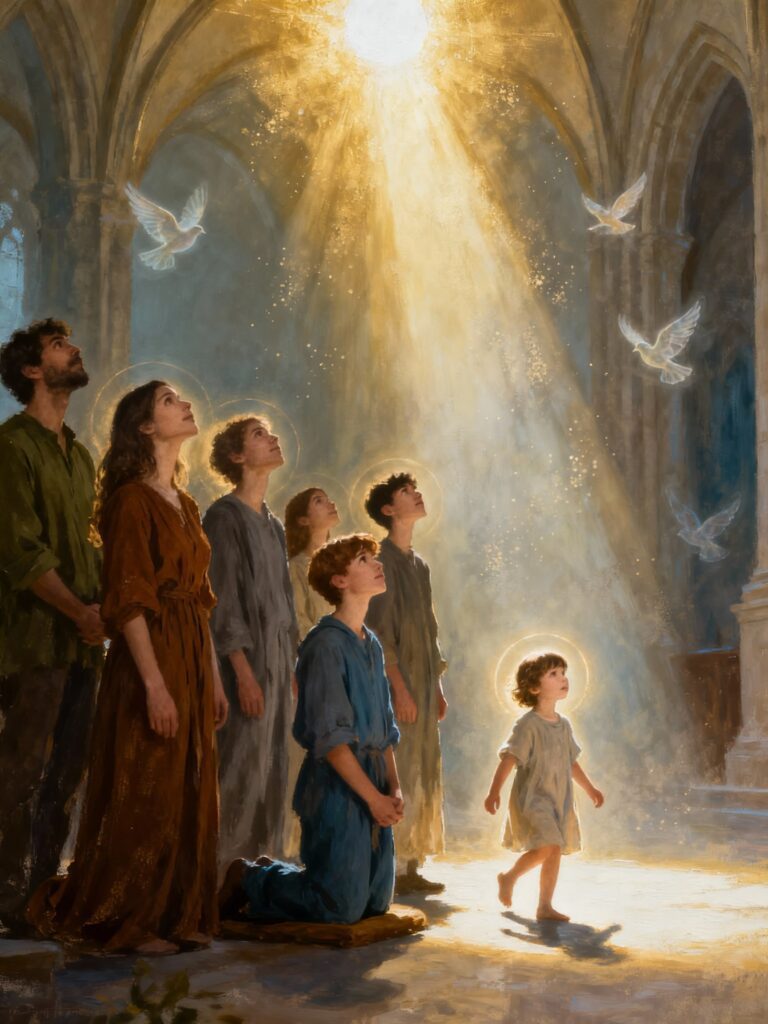
Practical conclusion
Seeing God as he truly is is not a distant dream; it is the concrete direction of all spiritual life. Faith opens the way, hope illuminates the path, and charity sets the rhythm. To be a child of God is already to carry within oneself the light of tomorrow. The believer's mission is therefore twofold: to receive and to reflect. To receive the Father's love, to reflect the Son's light in daily life.
This promise is not reserved for a privileged few: every person called to love the truth walks toward this vision. The world will change when our perspective changes. It all begins with how we allow ourselves to be seen by God.
Practical
- Every morning, repeat: "I am a child of God."«
- Read the passage 1 John 3:1-3 aloud once a week.
- Choose a concrete act of purification (forgive, simplify, listen).
- Cultivate five minutes of daily inner silence.
- Meditating on the gaze: cast a kind gaze on three people a day.
- Give thanks for three signs of love received each night.
- Entrust your hope to God before going to sleep.
References
- The Jerusalem Bible, 1 John 3:1-3.
- Irenaeus of Lyon, Against heresies, IV, 20.
- Augustine, The Trinity, Book XV.
- Gregory of Nyssa, The Life of Moses.
- John of the Cross, The Ascent of Carmel.
- Catechism of the Catholic Church, §§1023-1029.
- Teresa of Avila, The Interior Castle.
- Benedict XVI, Deus Caritas Est.


